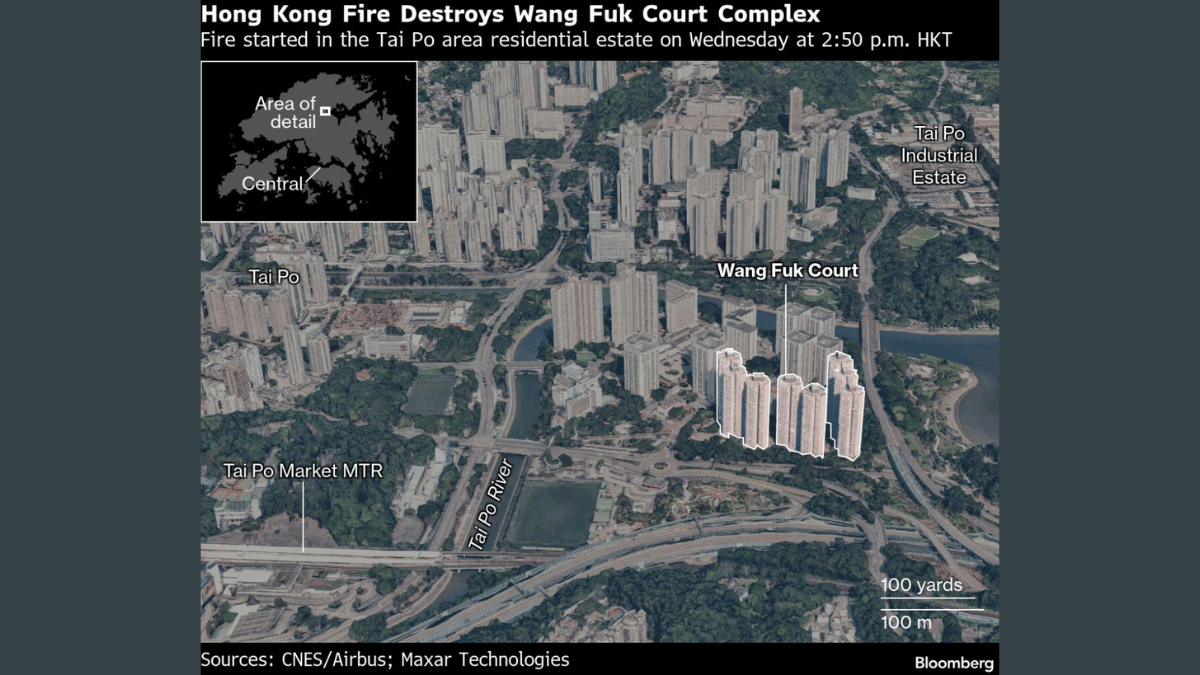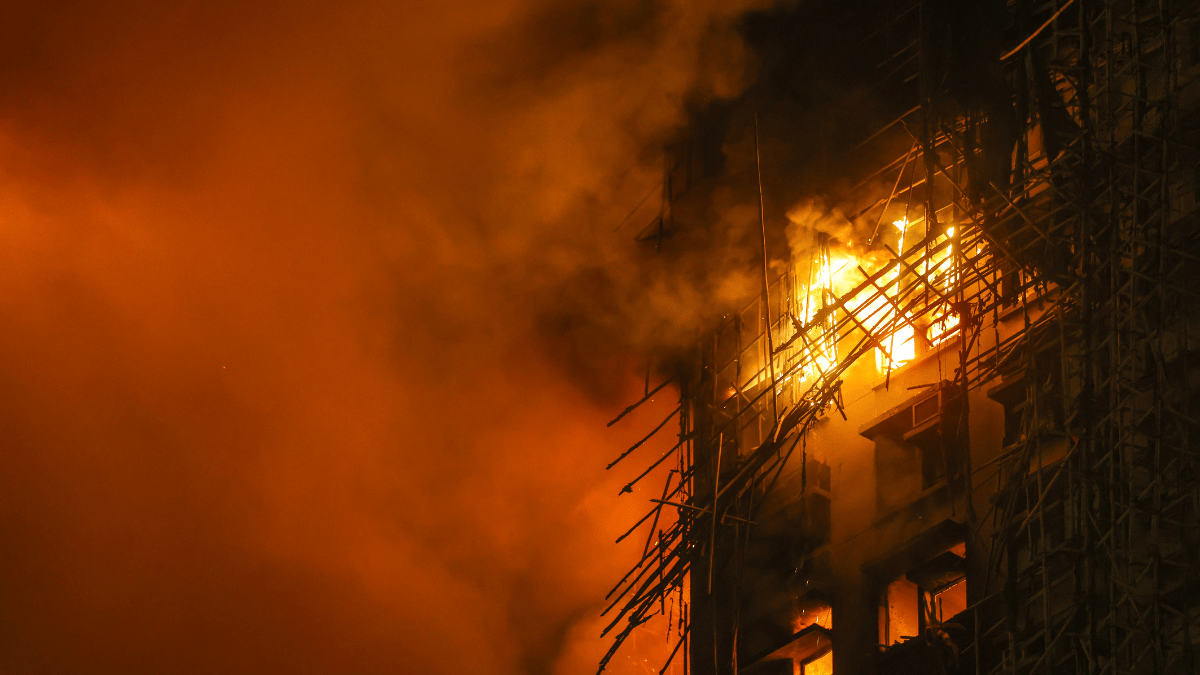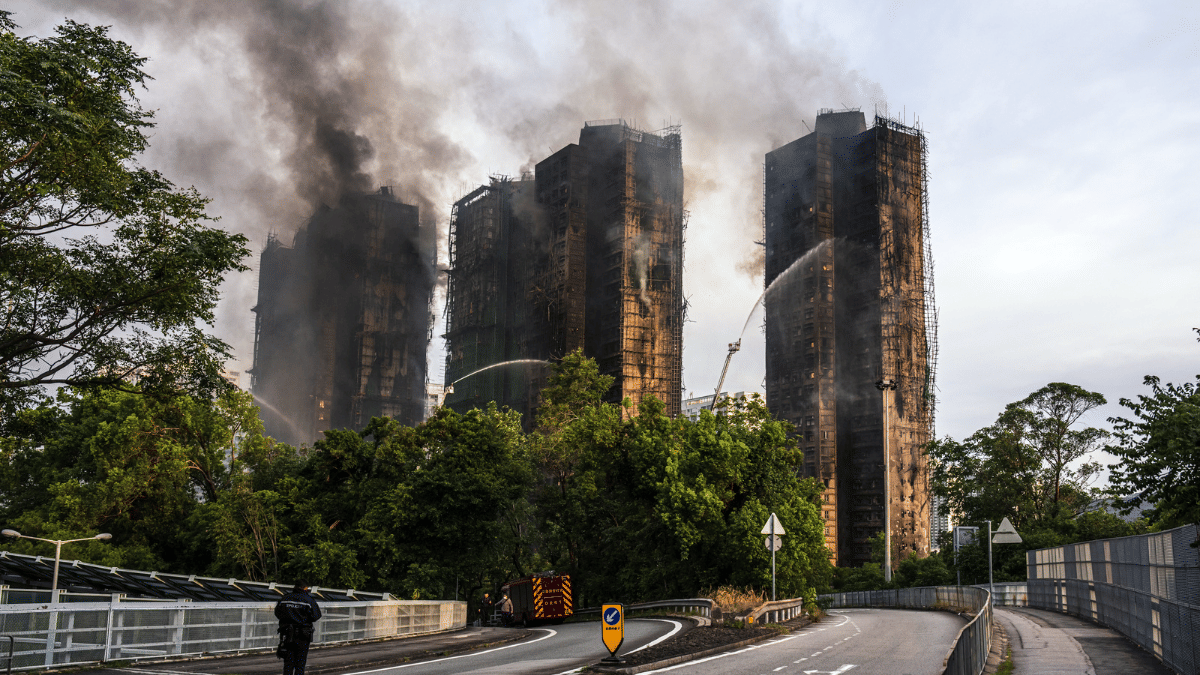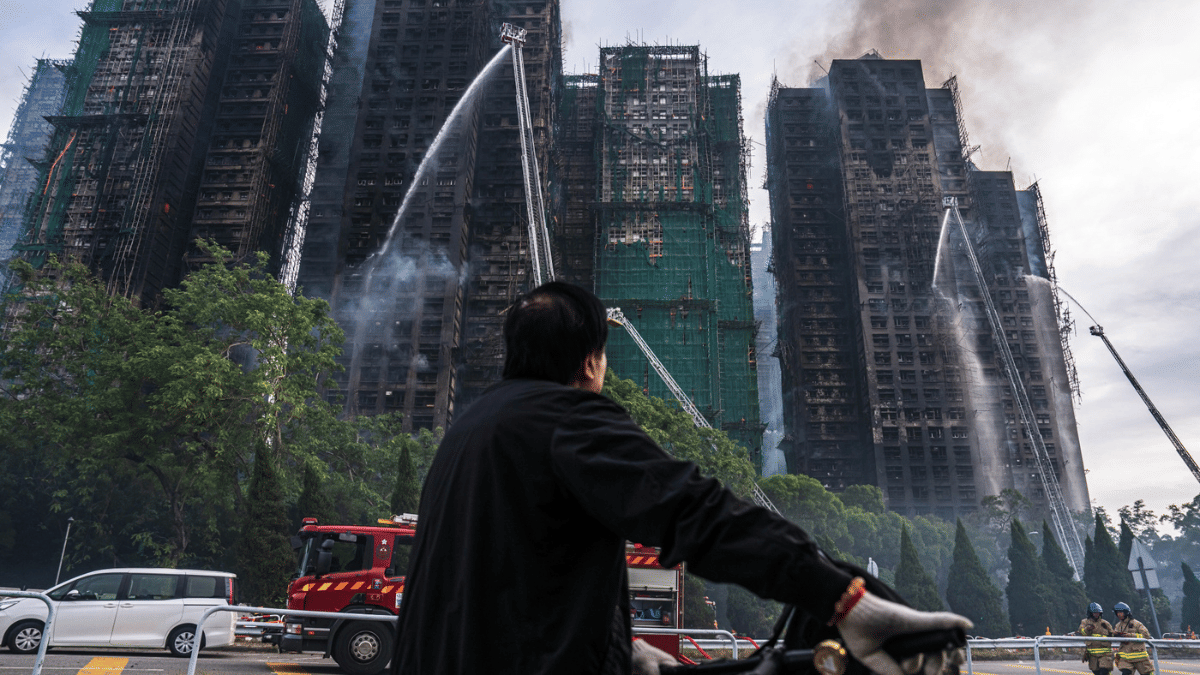It was around 2:51 p.m. on a sunny Wednesday afternoon when flames were first spotted climbing up the bamboo scaffolding and green netting that encased the 31-story Wang Cheong House in northeastern Hong Kong.
Within hours, the fire leapt from block to block in the waterfront residential complex in the district of Tai Po, fanned by continental winds bringing cool, dry air. Soon seven of the eight towers — which altogether contained about 2,000 apartments housing some 5,000 people — were ablaze as black smoke darkened the skies.
Residents scrambled to exit the buildings known as Wang Fuk Court, startled at how quickly the fire was spreading. With no alarms sounding, some received calls from relatives elsewhere who urged them to quickly evacuate. Others rushed back to the site after hearing the news from friends. Many elderly people in wheelchairs struggled to escape.
Resident Peter Leung, 71, made it back to the area just before 4 p.m. to find the complex in flames, although his 28th floor apartment was in the one building that didn’t catch alight.
“It was horrifying — I’ve lived so long and I’ve never been so scared in my life,” said Leung, who is now retired. “I’m heartbroken. The image is impossible to erase from my mind.”
As hundreds of firefighters began battling to contain the inferno, residents trapped in the buildings made desperate calls to emergency services. Others begged for their pets to be saved. Yet the intense heat meant rescue workers were unable to enter some of the buildings as flames continued to travel upward.

At 6:22 p.m., the government raised the fire alarm to the maximum No. 5 level for the first time in 17 years. The fires burned relentlessly through the night, consuming each floor in turn. By Thursday afternoon, firefighters had brought the blaze mostly under control after battling the fires for some 24 hours and rescue work was ongoing.
The spread of the inferno was unprecedented in a city with by far the most high-rise buildings in the world. The death toll currently stands at 55, including a firefighter. More than 70 people are hospitalized. It’s unclear how many people remained unaccounted for. Officials earlier said some 279 are missing, raising fears the number of deaths could end up being much higher.
As police cordoned off the area, residents and family members watched the smoldering buildings and searched for news on their loved ones. Rescuers were still managing to find survivors, leading to some hope that others could be found alive.
Residents Trapped
Ms. Fong, 40, said it was 8 p.m. on Wednesday when she last got in touch with her 70-year-old mother, who was hiding with her 50-year old neighbor in a bathroom on the 27th floor.
“Her situation was already getting worse — she told me she was getting dizzy and feeling confused,” Fong said. Her mother didn’t bring her phone when she left the apartment. By midnight, the neighbor’s phone had ran out of battery and they lost all contact.
“I don’t know how my mom is doing now,” she said, “They haven’t reached our floor yet.”
Chong Wai-man, 75, heard his neighbors shouting “fire” around 3 p.m., before his building caught on fire. He and his wife immediately rushed out of their apartment and walked down 15 floors to safety.
“I was in such shock that I didn’t even feel tired,” he said, adding that they spent the night with a son who lives nearby.
The cause of the fire has yet to be identified, but officials are questioning safety standards used in a project to renovate the buildings. Police arrested two directors and an engineering consultant of a construction company.
“Police have reason to believe that the company’s responsible persons were grossly negligent, which led to the incident and caused the fire to spread rapidly, resulting in serious casualties,” Senior Superintendent Eileen Chung said in a press conference.

Hong Kong requires the use of fire retardant protective nets and other materials used in scaffolds to prevent the spread of any fire.
“Protective netting, fire-resistant cloth and plastic sheeting on the exterior of the building burned far more intensely and spread much faster than compliant materials normally would,” Secretary for Security Chris Tang said. He added that this was “unusual.”
The deadly fire is one of biggest challenges Chief Executive John Lee has faced since he took office in 2022. Chinese President Xi Jinping urged all-out efforts to minimize the fallout from the disaster, which comes just days before legislative elections heavily promoted by officials.
Lee said the government had stopped all publicity efforts for the polls to focus on the fire, but didn’t give a direct response when asked whether the election would be postponed. The vote is only the second to be held since the legislature was overhauled in the wake of 2019 protests and Beijing’s imposed a national security law that effectively banned anyone who isn’t deemed a “patriot.”
Bamboo Scaffolding
The role of bamboo scaffolding in the fire is also likely to come under scrutiny. While the government announced in March that half of all new public building works would have to use metal scaffolding, a senior official told lawmakers in July it had no plans to ban the use of bamboo.
Hong Kong has seen several notable high-rise fires in recent years, although deaths are rare.
Scaffolding surrounding a commercial building in the city’s Central financial district went up in flames last month, causing four to be hospitalized. In 2023, a 42-story hotel being constructed in Hong Kong’s tourism district of Tsim Sha Tsui caught fire before being brought under control. Before today, the deadliest residential building fire in recent decades was a 1996 blaze at Garley Building in Jordan, which killed 41 people, and led to a major review of fire safety standards.


Wang Fuk Court was built in 1983 as subsidized housing before being sold at below-market prices to families under a government scheme. The renovation works were being done by Prestige Construction & Engineering Co., a registered contractor hired by the incorporated owners of the complex, according to a government statement.
Chen, 72, was home alone when she heard a commotion outside her third-floor apartment in Wang Fuk Court on Wednesday afternoon. Around 3 p.m., she received a call from her daughter, who was on holiday with her husband and two children in South Korea.
“I immediately rushed out, I didn’t bring anything but my keys and phone,” said Chen, who asked to give only her surname, adding that she never heard a fire alarm. She said she often felt scared when debris from the renovation work fell down, making loud noises.
“At least my family is safe,” she added. “But all our belongings might be gone.”
(Reporting by Richard Frost, Nectar Gan and Shirley Zhao. With assistance from Pratish Narayanan)
Disclaimer: This report is auto generated from the Bloomberg news service. ThePrint holds no responsibility for its content.
Also read: Bamboo scaffolding, 2,000 housing units: What we know of Hong Kong’s deadly fire






